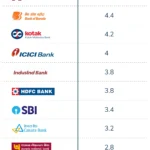Introduction
As we journey through life, planning for the future becomes increasingly vital, particularly when considering the financial security of loved ones. For many seniors, term life insurance offers a practical solution to ensure that family members are not burdened by final expenses, outstanding debts, or loss of income.
Unlike permanent life insurance, term policies provide pure protection for a specified duration without cash value accumulation, making them more affordable for older individuals on fixed incomes. However, navigating the complexities of term life insurance understanding policy features, evaluating coverage needs, deciphering underwriting nuances, and comparing offers from multiple insurers can feel overwhelming.
This comprehensive guide is crafted specifically for seniors and their families, aiming to demystify term life insurance and empower informed decision-making. It covers the essential factors to consider when selecting a policy, strategies for reducing premiums, potential pitfalls to avoid, and complementary products that may suit particular circumstances.
Whether you wish to safeguard a surviving spouse, settle debts, leave an inheritance, or donate to a favorite charity, the insights offered here will help you chart a clear path toward obtaining the optimal term life insurance coverage.
Understanding Term Life Insurance and Its Benefits for Seniors
Term life insurance is a contract between a policyholder and an insurer guaranteeing a death benefit payout if the insured passes away within a specified term typically ranging from five to thirty years. Premiums are determined based on age, health status, term length, and coverage amount, and they remain constant over the policy’s duration when level premium structures are selected. This predictability appeals to seniors managing retirement budgets and medical expenses, as it prevents unexpected premium hikes commonly found in other insurance products.
A fundamental advantage of term life insurance is its simplicity. Policyholders know exactly what they are buying: a specified death benefit for a specified period. There is no investment component, surrender charge, or cash value to monitor. For seniors primarily concerned with leaving a financial safety net, term coverage delivers straightforward peace of mind. Additionally, term life policies often have lower starting premiums compared to permanent insurance, making them accessible for older adults seeking maximum coverage at minimal cost.
Term life insurance can serve several specific goals for seniors. Covering funeral and burial costs alleviates the immediate financial strain on survivors. Paying off a remaining mortgage or outstanding medical bills prevents creditors from diminishing an heir’s inheritance. Replacing lost income for a dependent spouse or adult child with special needs ensures ongoing financial stability. By matching the coverage amount and term length to these objectives, seniors can customize term life insurance to address their most pressing concerns.
Assessing Your Coverage Needs as an Older Adult
Selecting the right coverage amount begins with a comprehensive evaluation of existing financial obligations and future obligations. Seniors should start by listing debts such as mortgages, vehicle loans, credit card balances, and personal loans.
It is essential to consider whether any co-signers or family members share liability for these debts, as life insurance proceeds will settle debts before distributing any remaining funds to beneficiaries. Accurately quantifying these liabilities prevents underinsurance that leaves families scrambling to meet financial obligations.
Beyond debts, seniors must assess ongoing living expenses for a surviving spouse or dependent. Income sources like pensions, Social Security, and retirement account distributions may partially offset costs. However, if the insured’s income significantly contributed to household expenses, selecting a death benefit that replaces a portion of that income for example, covering five years of living costs ensures survivors can maintain their standard of living. Seniors should calculate average monthly expenses, multiply by the desired number of years of support, and incorporate this figure into their coverage need assessment.
Estate planning goals also influence the required coverage. Seniors who wish to leave an inheritance or bequest to children or grandchildren, fund a grandchild’s education, or donate to a charitable cause may choose to include these objectives when determining the death benefit.
Factoring in these legacy desires can adjust the coverage upward, ensuring policy proceeds fulfill both practical responsibilities and emotional wishes. Conducting this holistic review of debts, living costs, and legacy goals lays the foundation for a policy that aligns with seniors’ unique circumstances.
Comparing Policy Options and Insurance Providers
When researching term life insurance, seniors encounter variations in term lengths, renewal provisions, conversion rights, and premium structures. Standard term durations typically span 10, 15, 20, or 30 years, though some insurers offer shorter or longer terms tailored to seniors’ needs. Selecting a term length that coincides with key financial milestones. such as the remaining mortgage term or duration until retirement account distributions deplete prevents paying for unnecessary coverage beyond one’s requirements.
Renewal and conversion features add flexibility. Renewable term policies allow extension of coverage beyond the original term without further medical underwriting, but at higher post-term premiums based on attained age.
Conversion options permit term policies to be converted to permanent insurance often whole or universal life without additional health exams. Seniors anticipating health decline may find conversion riders particularly valuable, as they lock in insurability before unforeseen medical developments. However, conversion deadlines and eligible products vary, so comparing these terms across carriers is crucial.
Premium structure differences can significantly impact cost. Level premiums remain fixed during the term, providing budget certainty. In contrast, stepped premiums start lower but rise at predetermined intervals, reflecting increasing mortality risk with age; this approach may appeal to seniors with short-term budgets but becomes expensive over time.
Graded death benefit policies offer low initial coverage amounts that increase gradually, but the death benefit in the first policy years may be limited. Evaluating premium projections over the full term helps seniors select the structure offering the best value and affordability.
Understanding Underwriting and Health-Related Considerations
Underwriting is the process by which insurers evaluate an applicant’s risk profile to determine eligibility and premium classification. Traditional underwriting involves a medical exam, detailed health questionnaire, review of medical records, and sometimes additional tests. Seniors in good health willing to undergo this process can qualify for preferred or standard rates, which may be substantially lower than simplified issue alternatives.
Simplified issue term policies streamline approval by relying solely on health questions without requiring exams. While faster and more convenient, these policies carry higher premiums and often limit coverage to modest amounts, making them suitable primarily for those seeking smaller death benefits or who cannot satisfy medical underwriting.
Guaranteed issue term policies dispense with health questions altogether, guaranteeing acceptance regardless of medical status or age. These plans impose the highest premiums and lowest death benefits, reflecting the insurer’s elevated risk exposure.
Age restrictions further influence underwriting options. Many insurers cap entry age for term policies at 75 or 80. Seniors above the maximum entry age may need to explore permanent solutions such as final expense or whole life insurance. Seniors nearing age limits should evaluate whether they have sufficient time to bind term coverage and consider conversion or guaranteed issue plans if traditional underwriting becomes unavailable.
Proactively understanding each insurer’s age parameters and underwriting requirements safeguards against unexpected coverage denial.
Cost-Saving Strategies for Seniors
Although term life insurance tends to be more affordable than permanent alternatives, seniors on fixed incomes may still seek ways to reduce premiums. One avenue is leveraging multi-policy discounts. Some insurers offer rate reductions when bundling term life with other products such as homeowners or auto insurance under a single carrier. While not universally available, bundling warrants exploration with existing insurance partners.
Group life insurance through associations or alumni organizations represents another potential discount. Many professional groups, clubs, or alumni associations negotiate group term life policies with favorable rates and simplified underwriting for members. Coverage limits may be lower than individual policies, but the reduced premiums and streamlined application may offset this constraint for seniors seeking modest death benefits.
Maintaining a healthy lifestyle can influence premium classification. Insurers reward nonsmokers, those with controlled blood pressure and cholesterol, and applicants with healthy body mass indices. Seniors contemplating application for traditional underwriting should allow time for positive health changes such as smoking cessation or blood pressure management to be documented in medical records. Even a brief period of improved health metrics can shift seniors into more favorable rating classes, translating into lower premiums over the term.
Common Pitfalls to Avoid
Many seniors fall into traps that undermine their coverage objectives. One frequent mistake is misinterpreting renewal rights. Renewable term policies permit continuation beyond the term without health questions, but renewal premiums sharply increase based on attained age.
Seniors anticipating the need for coverage beyond the initial term may assume they can renew at the same rate, only to be surprised by substantial cost hikes. Reading policy illustrations and confirming renewal premium schedules prevents such misapprehensions.
Underinsuring is another oversight. Seniors focusing solely on funeral expenses may neglect to account for outstanding debts, caregiving costs, or income replacement needs. Conversely, overinsuring by selecting imprudently high death benefits burdens limited budgets. A thorough assessment of liabilities, living expenses, and legacy intentions helps strike the appropriate balance between adequate coverage and affordability.
Failure to disclose health information accurately jeopardizes claims. Policies typically include incontestability clauses insurers cannot contest claims after two years but fraudulent misstatements or omissions discovered within the contestability period can void coverage.
Seniors must be forthright about medical history, lifestyle factors, and medications during application. Transparency not only preserves the policy’s integrity but also prevents beneficiaries from facing claim denials at the time they most need financial support.
Enhancing Your Term Policy with Riders and Add-Ons
Riders are supplemental provisions that augment standard term policies for an additional premium. Seniors can enhance base coverage in several ways. An accelerated death benefit rider permits early access to a portion of the death benefit upon diagnosis of a terminal illness, alleviating medical or hospice costs without depleting personal savings. Waiver of premium riders suspend premium payments if the insured becomes totally disabled, preserving coverage during periods of incapacity.
Other riders include child term riders alternatively termed family income riders that provide temporary coverage for minor dependents, and accidental death benefit riders that pay an extra sum if the insured’s death results from an accident.
While these add-ons increase premiums modestly, their targeted protections often align well with seniors’ evolving needs. Evaluating rider availability, cost, and benefits alongside base policy features ensures seniors obtain a comprehensive package tailored to their risk profile.
Planning for Policy Expiration and Conversion
As seniors approach the term expiration date, proactive planning is essential. At expiration, three main options exist: allow the policy to lapse, renew the policy accepting higher attained-age premiums or convert to a permanent structure if conversion rights apply. Each choice carries financial trade-offs.
Allowing lapse eradicates coverage, potentially exposing survivors to uncovered debts. Renewing may prove prohibitively expensive, especially for seniors with reduced income. Conversion locks in coverage but requires payment of permanent policy premiums, which can be significantly higher than term rates.
Seniors weighing conversion should compare projected costs of a new permanent policy against the increased renewal premiums of term coverage. In many cases, converting before medical conditions deteriorate enables more favorable permanent policy pricing.
Consulting with a financial advisor or insurance professional clarifies whether conversion aligns with long-term objectives and budget constraints. In select instances, secondary market options selling a term policy to an investor for a lump-sum payout offer liquidity but involve complex regulations and tax implications that warrant expert guidance.
Complementary and Alternative Insurance Products
While term life insurance addresses specific protection needs, seniors may require or prefer other products. Final expense insurance, sometimes called burial insurance, provides small face amounts generally between $5,000 and $25,000 with minimal or no underwriting, ensuring funds to cover funeral and related costs. Premiums are fixed for life, and coverage cannot lapse once paid for a short period, making it a popular standalone or supplement to term coverage for seniors beyond entry age limits.
Whole life insurance combines death benefit protection with guaranteed cash value accumulation. Although premiums are higher than term rates, whole life offers lifelong coverage and a savings component that seniors can borrow against. Universal life insurance delivers flexible premiums and death benefits, allowing adjustment in response to changing financial goals. However, these products demand ongoing monitoring of account values to prevent inadvertent lapses due to insufficient cash value.
Annuities represent another complementary option for retirement planning rather than pure life insurance. Fixed or variable annuities generate guaranteed income streams, which can supplement Social Security and pensions. While annuities do not provide death benefits in the same manner as life insurance, certain annuity riders allow beneficiaries to receive remaining contract value upon the annuitant’s death. Seniors interested in a holistic financial approach may integrate term life with annuities to balance income needs and legacy objectives.
Frequently Asked Questions
What is the right coverage amount for seniors?
Determining coverage begins by totaling obligations mortgages, loans, and medical bills then calculating ongoing support requirements for a spouse or dependent. Adding legacy goals such as inheritance or charitable gifts produces a comprehensive coverage target. Seniors should tailor the death benefit to this quantified need while balancing affordability.
How does age affect term life insurance eligibility?
Underwriting, premium rates, and maximum entry ages vary by insurer. Most carriers issue new term policies up to ages 75–80. Older applicants may face limited term lengths or simplified issue options. Seniors should confirm each insurer’s age limits and preferential underwriting classes to identify the best fit.
Can I convert a term policy to permanent insurance at any time?
Conversion rights depend on the policy’s terms. Many insurers allow conversion without medical exams until a specified age or the end of the term. Seniors interested in conversion should verify deadlines, eligible permanent products, and cost differences between conversion premiums and renewal premiums.
Are there tax benefits to owning term life insurance?
Death benefits from term life insurance are generally income tax-free to beneficiaries. Premiums are not deductible for personal policies. However, if the policy is owned by an irrevocable life insurance trust (ILIT), different tax implications may apply. Seniors with significant estates should consult tax professionals regarding estate tax strategies.
What happens if I outlive my policy term?
Upon reaching the policy’s expiration date, the insured can allow coverage to lapse, renew at higher rates, or convert if conversion options exist. Proactive seniors evaluate these choices six to twelve months before expiration to avoid unintentional gaps in protection.
Conclusion
Term life insurance stands out as a cost-effective, straightforward tool for seniors seeking to protect their heirs, settle debts, and leave a meaningful legacy. By thoroughly assessing financial obligations, comparing policy features including term lengths, renewal and conversion rights, and premium structures and understanding underwriting implications, older adults can secure the ideal coverage. Incorporating riders enhances flexibility, while exploring complementary products like final expense or whole life insurance broadens protection options.
Avoiding common mistakes such as underestimating coverage needs, misreading renewal provisions, or failing to disclose health details ensures policies perform as intended. Regular policy reviews and timely planning for expiration or conversion prevent unwelcome surprises. With informed guidance from reputable agents and financial advisors, seniors can tailor term life insurance to their unique situations, achieving peace of mind that loved ones will remain financially secure when it matters most.




